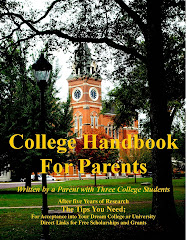Financial Aid 101: Getting Money for Tuition
By: Robert ValentineMoneyAlert.com
If you’re having trouble navigating the modern financial aid system, you’re not alone. Finding, applying and receiving different types of financial aid can be one of the biggest headaches associated with a college search. But it doesn’t have to be that way.
With only a little know-how and some financial planning, you can easily find your way through the maze known as financial aid. One of the most crucial pieces of advice that college planners have to offer is to ALWAYS apply for financial aid, even if you believe you won’t qualify.
So how do you apply for it? Simple. It’s a form called FAFSA, and it can be filled out quickly and easily online.
FAFSA stands for Free Application for Student Financial Aid. It is administered by the U.S. Department of Education and for years has given lower income students a chance to go to college. But it’s not just for lower income families. Anyone and everyone can apply; and depending on how soon you apply and the money is available, families with many different levels of income can receive some type of aid. It is recommended that every family fills out a FAFSA form as well as the financial aid forms required by the schools you have applied for. Each school will put together a financial aid award package based on the results of your FAFSA form.
When you apply for a FAFSA, you are given a PIN, which functions just like your personal ATM password. You use this PIN to log on to and off of your forms and sign them when you are finished.
FAFSA forms have a mathematical formula that determines your EFC. EFC stands for Estimated Family Contribution. It is the amount of money a family is expected to contribute toward a child’s education. This number does not represent how much the family can afford, but rather what the government believes you should be able to afford. This may require you to take out an extra loan as a family or withdraw savings, but the number helps decide how much aid you are eligible to receive. Your EFC is given to you when you submit your FAFSA. It is located on your Student Aid Report, or SAR.
The SAR is your Student Aid Report and it’s a summary of all the answers and information you’ve entered into the FAFSA form. You always want to print a copy of your SAR to keep for your own records. That way, when you fill out the individual school financial aid forms, your information will be consistent.
Once your school receives your information, they will put together a financial aid package and present it to you. Your package can contain a wide variety of options for you to choose from, including grants, loans, and scholarships. If your EFC is low, you may be offered a PELL Grant. Pell’s help pay for college and do not need to be paid back.
Your financial aid package may also include an option of work-study, where your child can work at a campus job and make extra money. Most packages also include a variety of loan options. Some loans are government-subsidized; others are not. Because there are many different types of loans available to parents and students, you should analyze your current financial situation carefully before choosing one. Government-subsidized loans are offered interest-free while your student is in school and allow the student to wait until six months after college graduation to start paying back the principal. However, there is a limit to how much you can borrow, and you must complete your degree by a certain date, so make sure you plan wisely.
So the next time someone asks if you used your PIN to check the SAR on your FAFSA to see if you are eligible for a PELL, you can reply with a resounding and confident “Yes!”
Not sure where to apply? The first step to exploring scholarships and financial aid options is to identify the schools you want to attend.
About the Author: Robert Valentine is a well-known expert in the matters concerning investors. His popular 529 plan articles have been published by several publications throughout the United States







